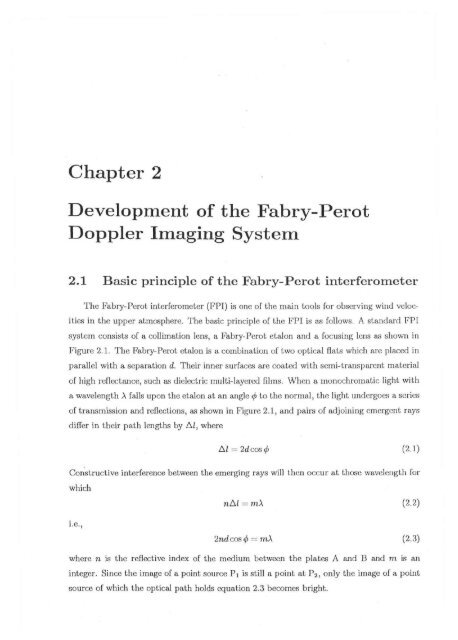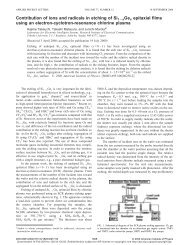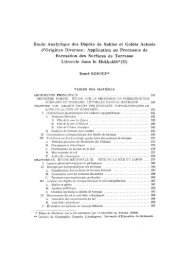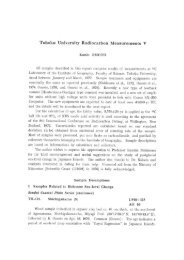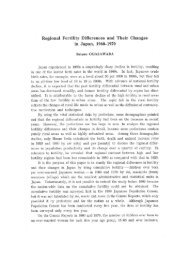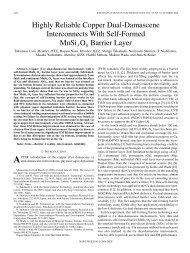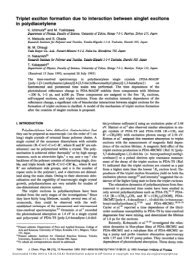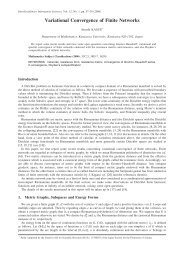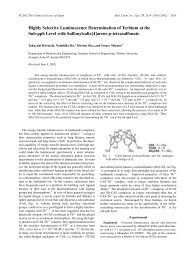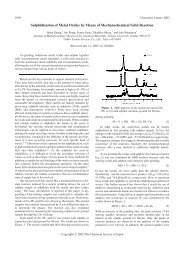MgE71241:1attf:3(t At-- 0 -3 5t5M I:. N1144±TitoD riziMinliJ VAT .9f 1 ...
MgE71241:1attf:3(t At-- 0 -3 5t5M I:. N1144±TitoD riziMinliJ VAT .9f 1 ...
MgE71241:1attf:3(t At-- 0 -3 5t5M I:. N1144±TitoD riziMinliJ VAT .9f 1 ...
You also want an ePaper? Increase the reach of your titles
YUMPU automatically turns print PDFs into web optimized ePapers that Google loves.
Chapter 2<br />
Development of the Fabry-Perot<br />
Doppler Imaging System<br />
2.1 Basic principle of the Fabry-Perot interferometer<br />
The Fabry-Perot interferometer (FPI) is one of the main tools for observing wind veloc-<br />
ities in the upper atmosphere. The basic principle of the FPI is as follows. A standard FPI<br />
system consists of a collimation lens, a Fabry-Perot etalon and a focusing lens as shown in<br />
Figure 2.1. The Fabry-Perot etalon is a combination of two optical flats which are placed in<br />
parallel with a separation d. Their inner surfaces are coated with semi-transparent material<br />
of high reflectance, such as dielectric multi-layered films. When a monochromatic light with<br />
a wavelength A falls upon the etalon at an angle 475 to the normal, the light undergoes a series<br />
of transmission and reflections, as shown in Figure 2.1, and pairs of adjoining emergent rays<br />
differ in their path lengths by A1, where<br />
<strong>At</strong> = 2d cos (2.1)<br />
Constructive interference between the emerging rays will then occur at those wavelength for<br />
which<br />
i.e.,<br />
nAl = mA (2.2)<br />
2nd cos 4 = mA (2.3)<br />
where n is the reflective index of the medium between the plates A and B and 771, is an<br />
integer. Since the image of a point source P1 is still a point at P2, only the image of a point<br />
source of which the optical path holds equation 2.3 becomes bright.


